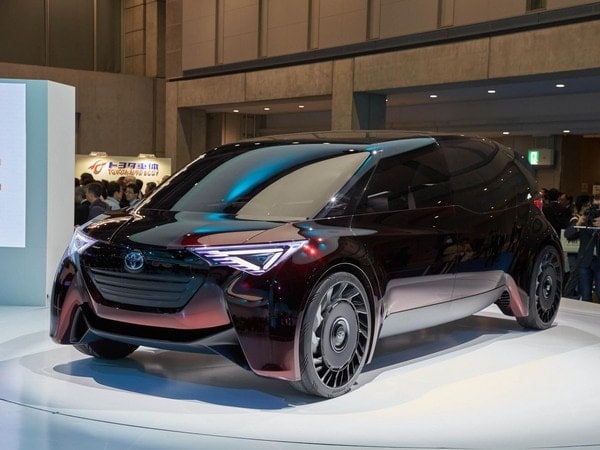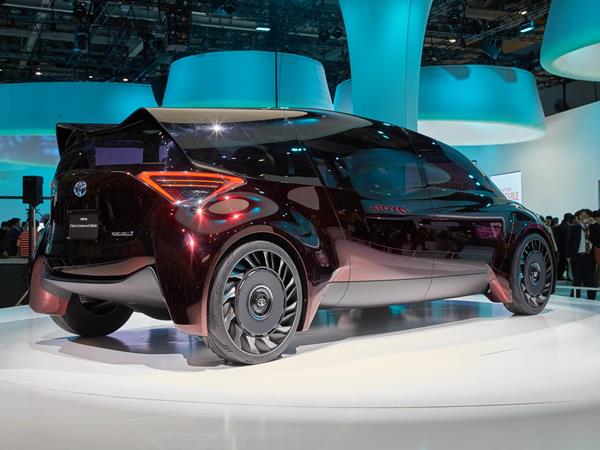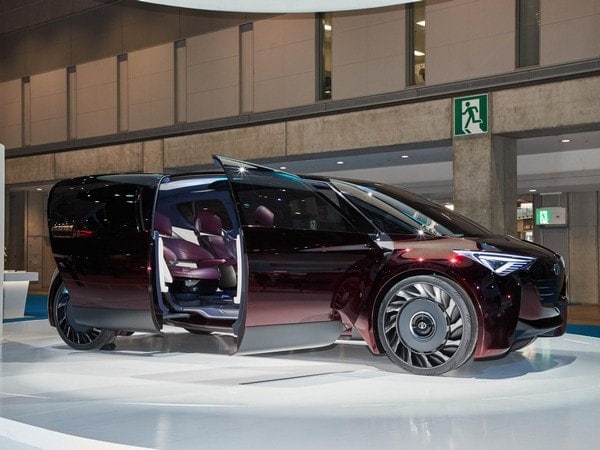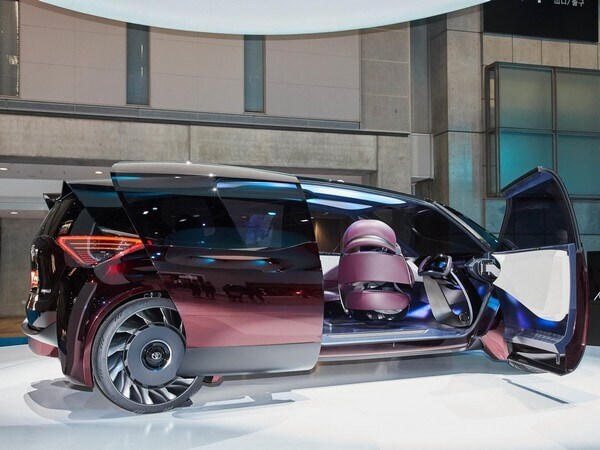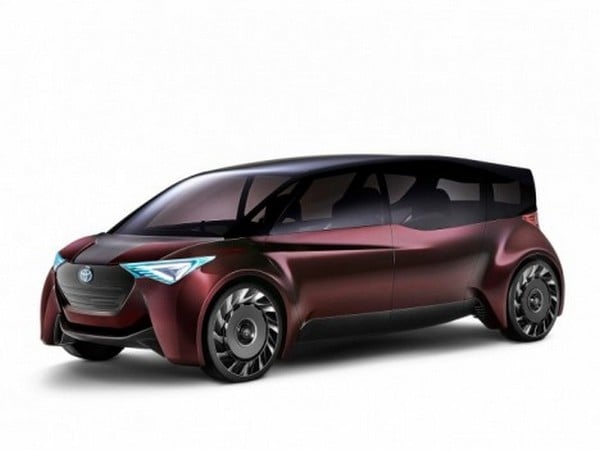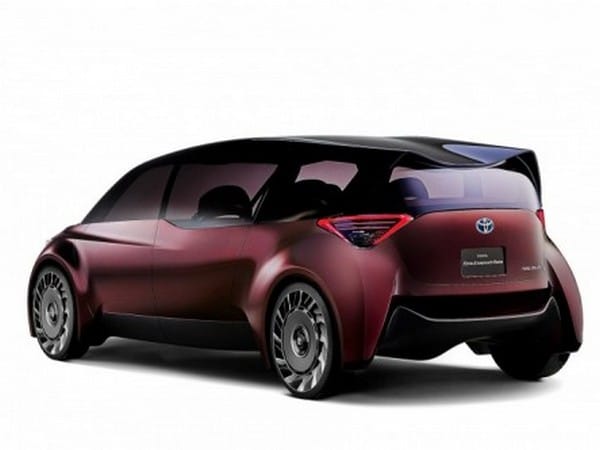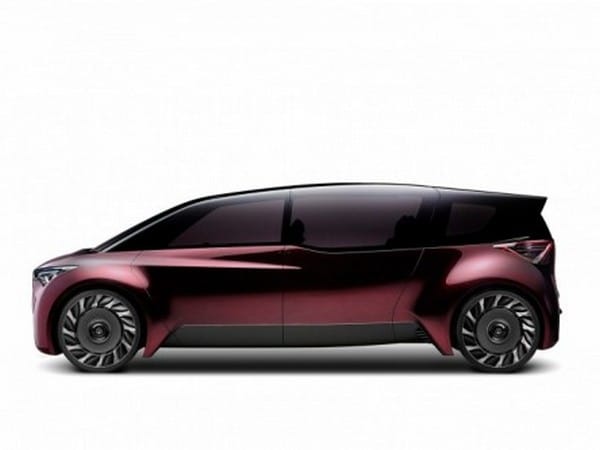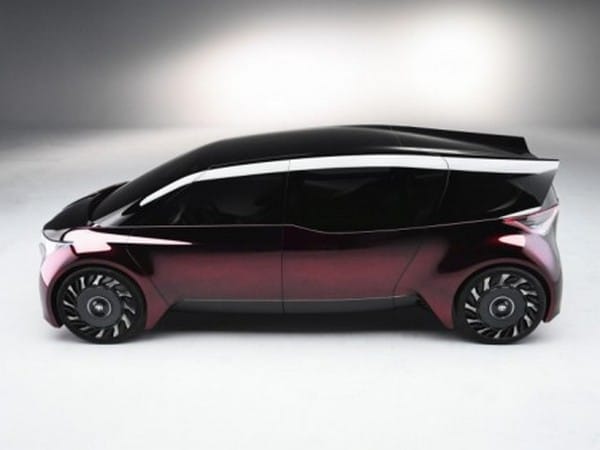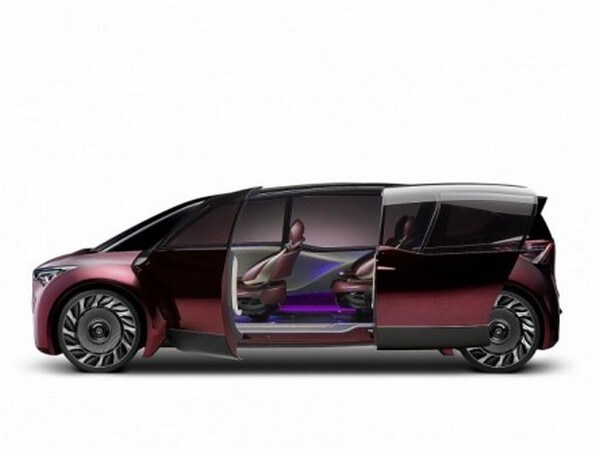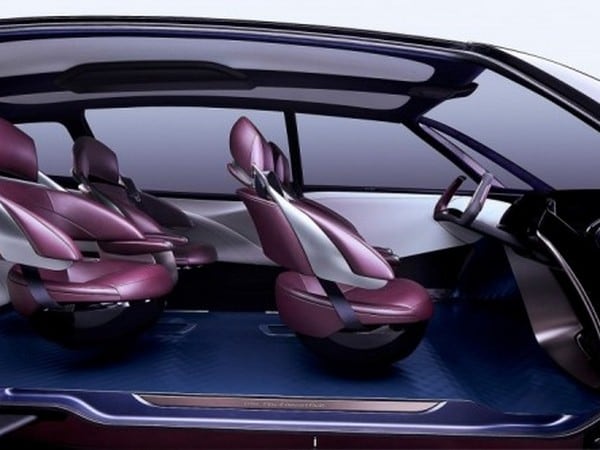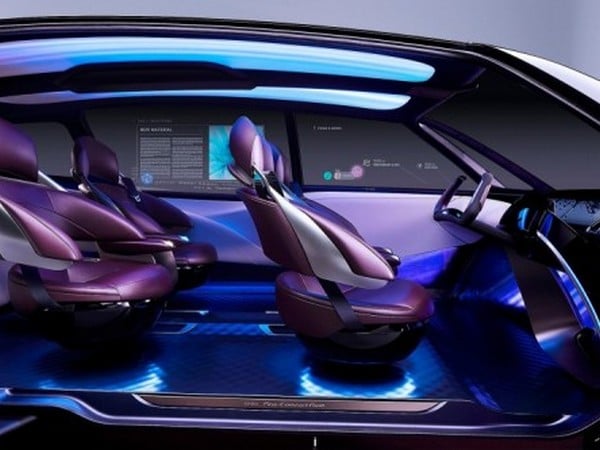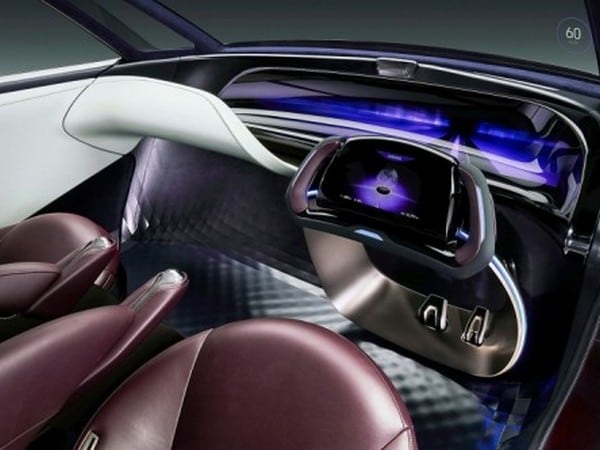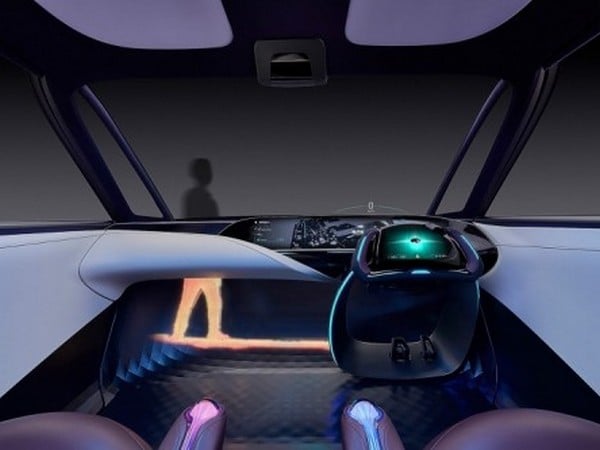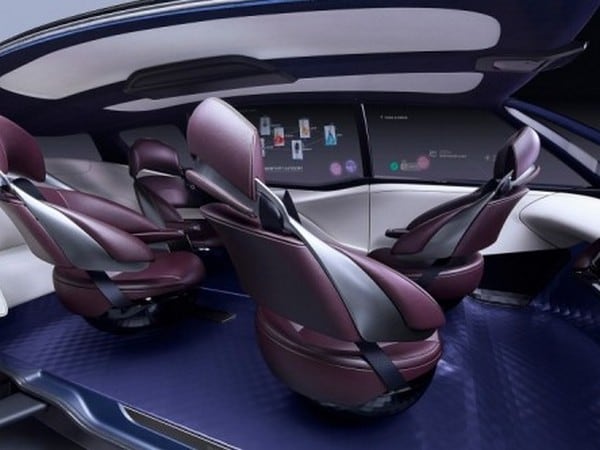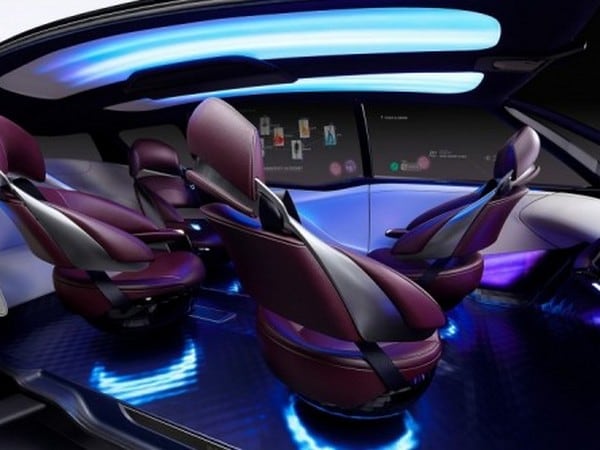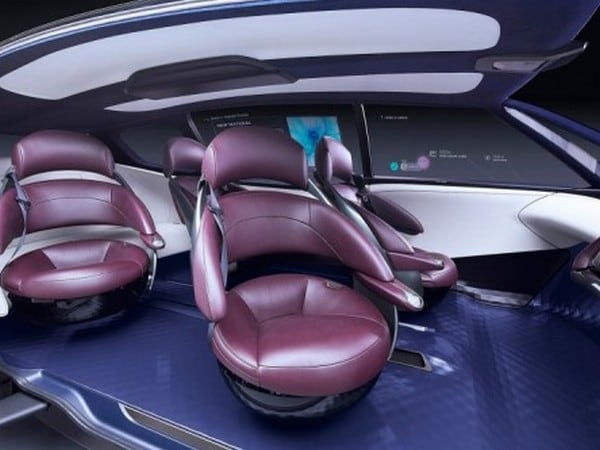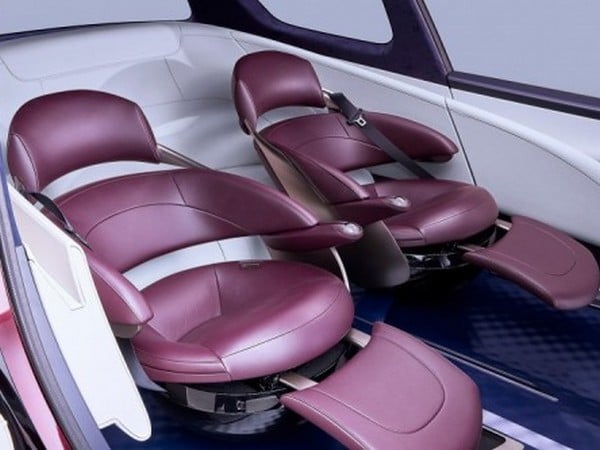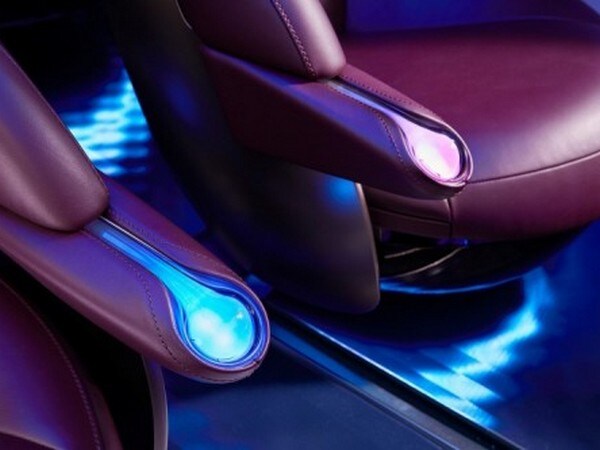As a nation, Japan has a more determined commitment to electric propulsion than any country on earth, a commitment with a strong component of fuel cell power at its core. Already a player in the fuel cell game with its Mirai compact, Toyota’s display at the 45th Tokyo Motor Show includes a concept vehicle designed to suggest the next chapter in hydrogen-based electric power.
Called the Fine-Comfort Ride, the show property is a little shorter than the Mirai—190.5 inches versus 192.5—but significantly wider (76.8 inches versus 71.5) and taller (65 inches versus 60.4). Those dimensions, plus a supersize wheelbase (135.8 inches) and two-box hatchback design gives the concept ample room for six passengers, a key element in the Fine-Comfort label.
Seating is arranged in three rows. Chairs in the first two rows swivel, and all six have leg rests, a la recliner-style chairs. Toyota characterizes the interior treatment as “wearing comfort,” i.e., “being wrapped in comfort.” The interior is also a showcase for connectivity via its touchscreens and “Agent” concierge function.
Also: Check out all of the latest news from the Tokyo Motor Show
Four-wheel power
Fine-Comfort Ride propulsion details are sketchy. Toyota characterizes production of the hydrogen fuel cell stack as “a large amount of available electric power.” The power goes to motors in all four wheels. Without specifying capacity of the hydrogen storage, Toyota claims a potential cruising range of 620 miles per fill, according to the Japanese test cycle.
For contrast, max range of the Mirai is pegged at 310 miles.
